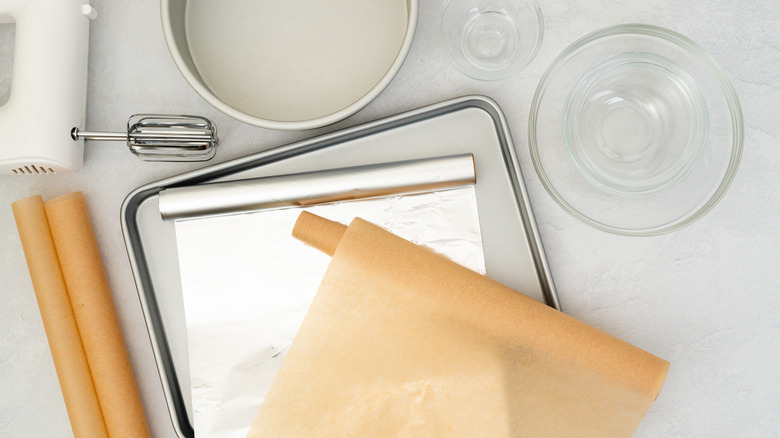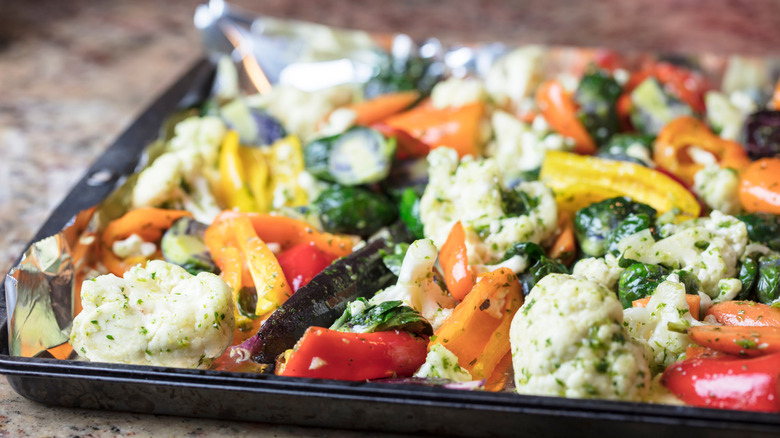Should You Be Lining Sheet Pans With Foil?
Yes, baking sheets should be lined with something before popping them into the oven, microwave and even the fridge depending on what's cooking. Lining the sheets cuts down on the cleanup time and extends the life of the pans. Aluminum foil happens to be the most versatile of the sheet pan liners. Foil can be pressed into corners and used when the heat is way too high for its lining cohorts: parchment paper, wax paper, and silicone.
Foil beats wax paper, the least versatile of the sheet pan liners. Wax paper is good for sticky and delicate foods such as haystack cookies and other no-back recipes. However, a wax-lined sheet pan can't go in the oven like a foil-lined pan. The heat will melt the wax lining into the food.
Parchment paper and silicone mats hold up better as liners and are sometimes used interchangeably with foil. Both can go in the oven and like foil are used for baking cookies, brownies, cakes and fish. However, parchment and silicone mats become a fire hazard when the recipe calls for high heat (above 425 degrees). Only foil can hold up as a sheet pan liner under the broiler and on the grill.
Aluminum foil is also the only liner that bakers can bend and press into a pan's nooks and crannies. This makes foil-lined sheet pans easier to clean up than any of the other liners.
Three notes on using foil on sheet pans.
Foil comes in standard, nonstick and heavy-duty forms. All three can be used to line a sheet pan effectively. They can all be used in high heat as well, but there are some things to consider.
When baking sticky foods like cinnamon rolls, nonstick foil is best. Standard can be used, but there is a risk of leaving part of the rolls on the foil or of pulling away small pieces of foil with the food. The browning, sauces and marinades used one sheet meals can also create a stuck situation with standard foil. Nonstick foil ensures that all of the food ends up on the plate.
Heavy-duty foil is thicker and comes in handy when broiling and grilling in high heat. Standard and nonstick foils can hold up to those temperatures (450 to 650 degrees Fahrenheit). However, some foods cooked at high heat can cause the foil to tear, erode or melt. Oils used in some one-sheet recipes or the natural oils from fatty meat can cause the foil to degrade or melt during cooking in high heat. Save your sheet pans by lining them with the thicker, heavy-duty foil before grilling or broiling; according to Reynolds, heavy-duty foil is designed for very high temperatures whereas the other two types are not.
A bare baking sheet is a recipe for a food disaster and more time wasted washing dishes. Avoid the headache by using foil to protect the food and the sheet pan.

